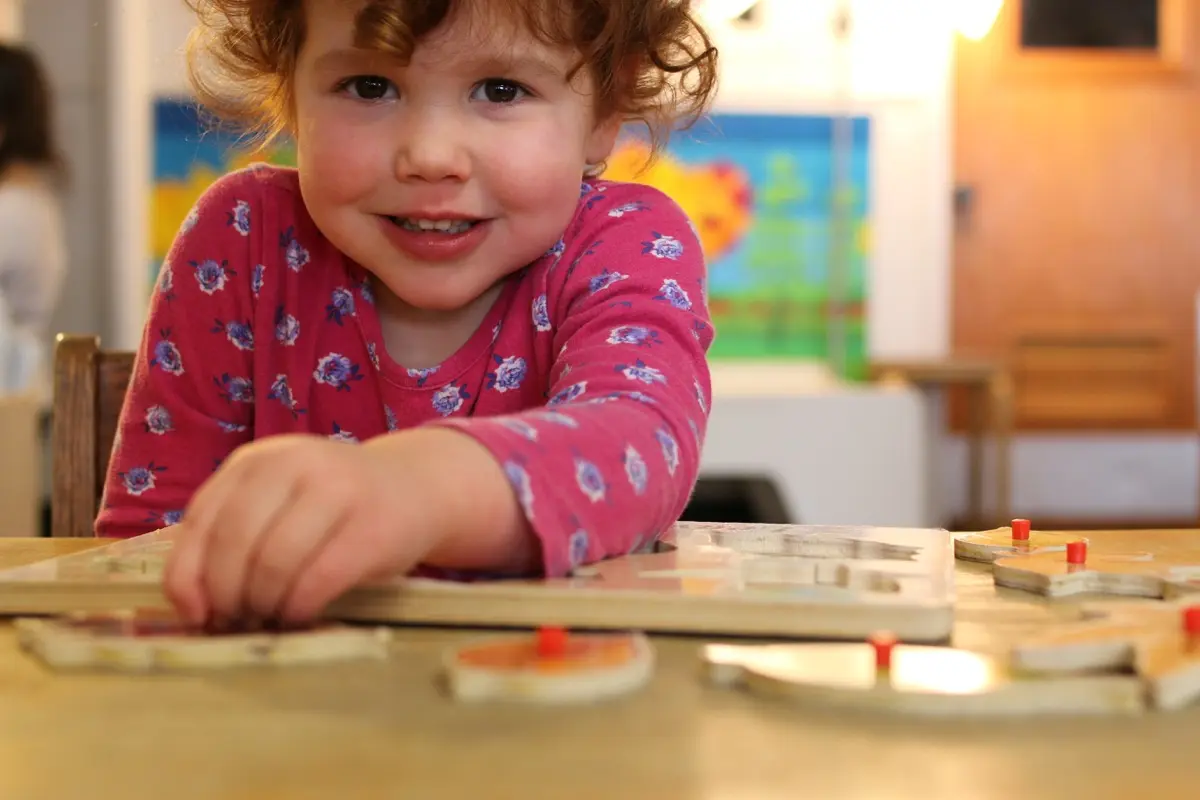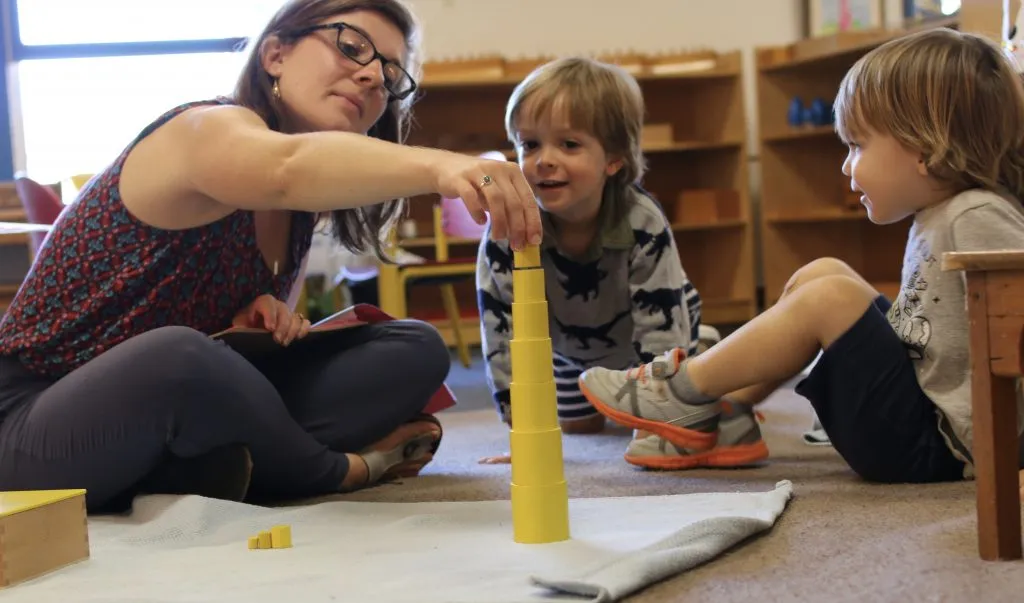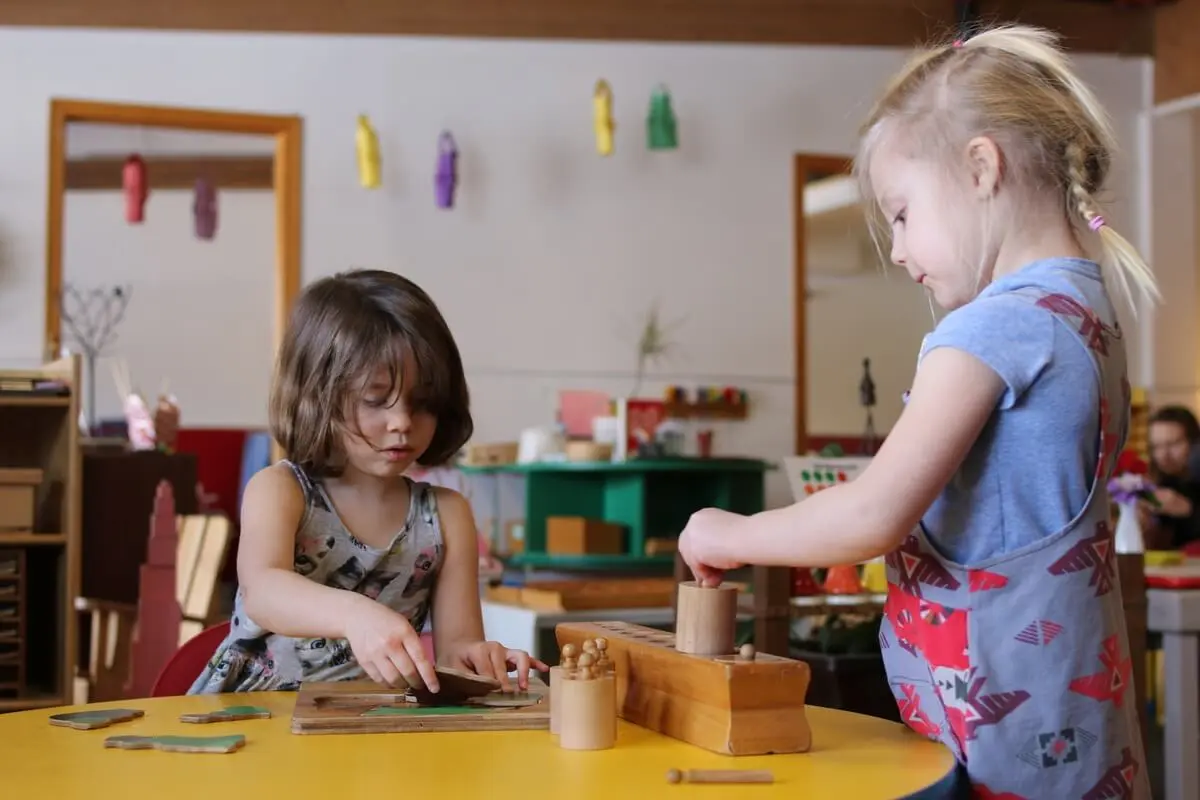The education of the senses is practical and necessary to carrying out one’s daily pursuits and prepares the child for living and enjoying the world that she lives in.
The sensorial materials are designed to give a sensorial impression of the world already experienced by the child, thus helping to order her impressions and clarify her mind. For example, the child sees rectangles in cupboard doors, circles in plates, squares in picture frames, trapezoids in lampshades. These solids, determined in form by their surface, are impressions taken in by the child. Isolation of a property is one keen aspect of the sensorial materials. For example, the red rods are identical among themselves in all respects except the variable quality of length, thus bringing it to the forefront: A physical property is highlighted while everything else remains constant. This helps the child to focus on that one aspect.
For another example, the sound cylinders look the same but the pairs differ in the loudness, or softness, of the sound. By shaking them, the child discovers the differences of the quality of sound, and with practice, she can find the similarities and pair them. With more practice, the child will be able to discover the finer distinctions inherent in the material and grade them.






